Samsung Galaxy S5 vs Apple iPhone 5S
Introduction
Samsung's 2014 flagship, the Galaxy S5, broke away from its predecessors' heritage with a water-resistance certification, and a new “perforated” rear cover design. That's not all, though, as Samsung also went after the Touch ID fingerprint sensor in the iPhone 5s, providing a scanner of its own in the home key, and added a unique heartrate sensor on the back, to make its flagship stand out.
As usual, we are staging a UFC combat between the “perforated” looks and the new features of the 5.1” Galaxy S5, against the slender steel-and-glass frame of the iPhone 5s, as this has become the heavyweights fight in the Android vs iOS championship. Which one has done the fingerprint sensing right? Whose camera takes better pictures? How are the interfaces different? Which one will leave the fight more bruised and battered ? Let's find out...
Design
Plastic-fantastic S5 feels less premium to hold, but its water-resistant design still lets you swap the battery or add more memory. Its fingerprints sensor is more cumbersome to use than Touch ID, though.
Measuring at just 8.1 mm, the Galaxy S5 is thicker than the 4” iPhone 5s, and much larger, heavier, and cumbersome to use with one hand, as it houses a 5.1" display. Its plastic build introduces a new ”perforated” back refrain, which comes in four colors, including a golden version. Apple's handset also has a gold-colored variant, but the iPhone is crafted in a very different way, with premium metal and glass materials for the chassis. If you don't mind the polycarbonate casing of the S5, however, it will offer you not only a bigger screen, but also an IP67 certification, letting you dunk it in three feet (1 meter) of water for up to half an hour. You can still remove the back cover, in the best of Samsung's traditions, which gives you easy access to swap the battery, or add memory with a microSD card – possibilities that the iPhone 5s doesn't offer.
Apple shook the mobile phone industry with a unique Touch ID sensor embedded in the home key, which is the first fingerprint sensor on a mobile device done right. Samsung was apparently in a jiffy to catch up, and integrated a swipe Finger Scanner in the S5's home key in its turn. Queue the copycat jokes here, but the two sensors work in quite a different manner. Not only do the iPhone's dimensions make Touch ID way easier to use with one hand, but it is also much more sensitive than what Samsung offers.
Upon initial setup, Apple's creation takes a “snapshot” of your fingerprint in all possible positions, so you can unlock the phone with the slightest touch, no matter how crooked your digit lands. The fingerprint scanner on the S5 stays true to its title, requiring you to swipe directly over the home key for it to work, which means that you usually have to hold the phone with the other hand. Imagine having to put down your bags of groceries each time you need to check something on your phone – you'll quickly prefer to ditch the print sensing altogether.

If you register your thumb swiping it diagonally over the home key in the first place, however - the way you would use it when holding the phone with one hand - the S5 will record this position, and you will be able to unlock the phone easily by swiping briefly almost in parallel to the home key. It worked most of the time with us, as you can see in the video below.

Another unique new feature of the S5 is the heartrate sensor on the back, next to the LED flash. It is tightly integrated with Samsung's S Health app, and requires you to press your finger against it for a few seconds, before it takes an optical pulse reading. Some might dismiss this as a gimmick for the sake of inserting something new, but for athletes or older users it might present a convenient way to check their pulse without manually calculating beat counts.
The S5 has a 5.1" Full HD Super AMOLED screen with 432ppi pixel density, while the 4" 640x1136 pixels IPS-LCD display on the iPhone has 326ppi. You won't be able to notice the individual pixels on both displays from a normal viewing distance, but if you examine the screens closely, the S5 panel would come out sharper.
Apple has proven many times that its phone display panels flaunt almost perfect sRGB gamut color representation, whereas the AMOLED panels exhibit somewhat saturated, even gaudy colors. The same goes here, with the latest S5 and the iPhone 5s. By default, the color temperature of the Galaxy S5 screen is 8000K, resulting in very blueish, cold image. The Professional profile makes things better, with temperature of 7270K, almost on par with iPhone's 7150K. However, the S5 screen still has that cold feel, as its screen emphasizes green and blue. Here we should note that although the AMOLED screens of Samsung flagships are not very color-accurate, most people like them for that “wow” factor of their oversaturated imagery. The Galaxy S5 has deeper black levels, and lower minimum brightness (2 nits), too, which makes it a tad gentler on your eyes in very dark environments.
Samsung says this is the brightest AMOLED screen it has produced to date, capable to reach 500+ nits of peak brightness, in line with what the iPhone 5s is able to churn out, too. Both displays seem on par in both indoor and outdoor visibility, as a simple sunlight test outside confirmed for us, too. The phones' panels sport great viewing angles, both vertically, and horizontally.
Display
The phones sport bright displays, with good viewing angles, and nice outdoor visibility, but the default Standard mode on the S5 display exhibits way too saturated colors, and cold overall appearance.
The S5 has a 5.1" Full HD Super AMOLED screen with 432ppi pixel density, while the 4" 640x1136 pixels IPS-LCD display on the iPhone has 326ppi. You won't be able to notice the individual pixels on both displays from a normal viewing distance, but if you examine the screens closely, the S5 panel would come out sharper.
Apple has proven many times that its phone display panels flaunt almost perfect sRGB gamut color representation, whereas the AMOLED panels exhibit somewhat saturated, even gaudy colors. The same goes here, with the latest S5 and the iPhone 5s. By default, the color temperature of the Galaxy S5 screen is 8000K, resulting in very blueish, cold image. The Professional profile makes things better, with temperature of 7270K, almost on par with iPhone's 7150K. However, the S5 screen still has that cold feel, as its screen emphasizes green and blue. Here we should note that although the AMOLED screens of Samsung flagships are not very color-accurate, most people like them for that “wow” factor of their oversaturated imagery. The Galaxy S5 has deeper black levels, and lower minimum brightness (2 nits), too, which makes it a tad gentler on your eyes in very dark environments.
Samsung says this is the brightest AMOLED screen it has produced to date, capable to reach 500+ nits of peak brightness, in line with what the iPhone 5s is able to churn out, too. Both displays seem on par in both indoor and outdoor visibility, as a simple sunlight test outside confirmed for us, too. The phones' panels sport great viewing angles, both vertically, and horizontally.
Samsung Galaxy S5 360-Degrees View:
Apple iPhone 5s 360-Degrees View:
Interface
The Galaxy S5 offers a more versatile, but harder to take up interface, compared to the simplified iOS 7 on the iPhone 5s.
With the Galaxy S5, Samsung toned down its customized TouchWiz experience, layered on top of Android 4.4.2 KitKat, when compared to the previous versions. We don't have as many S-branded apps, and the menu sections and icons have received a flatter, simpler look. It doesn't look very uniform this way, as the homescreens and widgets have remained the same, yet it is very functional. There are numerous new features in that version, like Private Mode and Kid Corner, aimed to make your multi-user life with the handset easier. We can also count on Samsung's Multi Window mode that divides the 5.1” display in two resizable sections that can run two apps independent of each other at once, aiding your multitasking needs.
The iPhone runs iOS 7.1, which exhibits flat, colorful icons, and handy drop-down notification bar, which is inhabited by your most pertinent new info. We also get a pull-up Command Center, rich in connectivity toggles, and a screen brightness slider. Apple's approach doesn't bet on a widget system, and doesn't offer any split-screen multitasking, or floating apps. You can go back and forth between the apps you have open at the moment, which is as close to multitasking as you can get on the iPhone 5s. Apple provides its Siri voice-controlled assistant, which is countered with Google Voice on the S5, and the two offer similar functionality for those who are bent on using their vocal cords to manage their handset. The iPhone 5s has the excellent Passbook application, which aggregates your digital coupons, airline and train tickets, movie passes and rewards and gift cards, while Google's Android has yet to reply to iOS on this feature.
Processor and memory
With a lot of processor oomph under the hood, Galaxy S5's Snapdragon 801, and Apple's 64-bit A7 will eat any app or game you throw at them for breakfast.
Samsung Galaxy S5 comes with a 2.5 GHz quad-core Snapdragon 801 chipset with LTE support, paired with 2 GB of RAM. It offers much improved 3D graphics and image processing, compared to Snapdragon 800 of yesteryear. Apple offers a 64-bit A7 processing chip in its handset, and 1 GB of RAM. Both processors are so fast, that there is barely any app out there, including heavy 3D games, that would make them break a sweat. The 5s has 16 GB of internal memory from the box, just as the S5, which, however, carries a microSD slot for more.
Internet and connectivity
We can attest for stellar browsing experience on both devices, with fast and smooth scrolling, panning around and zooming in or out. The Reading mode in Safari on the iPhone 5s strips webpages of distracting content like pics and ads, and presents you the article in a clear text format for easier reading. It doesn't support Adobe Flash, which can be sideloaded on the default S5 browser for those situations you might need it. Surfing the web on the larger display of Samsung's phone, is, naturally, more enjoyable, due to the sheer screen size advantage.
The handsets have multiband LTE and 3G radios, depending on the area they are sold in, as well as a suite of other connectivity options, such as Wi-Fi, Bluetooth 4.0, A-GPS, and DLNA streaming. The Galaxy S5 adds NFC to the mix, too. Samsung's flagship flaunts a Download Booster mode, which combines Wi-Fi and cellular data for quicker connections. It also offers an infared port at the top, which is used to command home electronics like TVs, stereos, set-top boxes, and even AC units of various brands.
Camera
The Galaxy S5 offers numerous inventive shooting modes, like real-time HDR and Selective Focus, yet its picture and video quality is on par with the iPhone 5s.
The Galaxy S5 packs a new 16 MP camera that features 1/2.6” 16:9 sensor with 1.1 micron pixels, a six-elements f/2.2 aperture lens, and LED flash. Thanks to a new phase detection auto-focus, it also brags with one of the fastest focusing times in a smartphone camera, at 0.3 seconds. The iPhone 5s houses an 8 MP shooter with two-tone flash, five-element f/2.2 lens with smaller 1/3” sensor that sports much larger, 1.5 micron pixels. The iPhone 5s' autofocus times have been measured to be between 0.5 – 1 second, depending on the light situation, which is slower than the S5 on paper, but in reality feels very, very fast too.
The Galaxy S5 camera app offers an abundance of shooting modes, including a new Selective Focus camera option, that will capture at different focus settings, leading to a blurred-out background, and more artsy photos. It also has a rel-time HDR mode that delivers instant results, both for stills and for video. The iPhone 5s flaunts a very simple, easy to use camera app. It focuses only on the main options, such as Panorama and now-automatic HDR capture, but does them extremely fast, and with good quality.
The iPhone 5s has consistently delivered great results in our camera comparisons, but how does it fare against the new technology in the S5? Pretty well, actually, at least in terms of color representation, which is more realistic and true-to-life, than the slightly overblown colors that come out of the Galaxy S5. However, the colors of the S5's photos are still pretty correct and pleasant to look at, even making the competition look washed-out in comparison. Samsung's phone captures more detail, akin to its 16 MP camera resolution. Its photos look sharper, and more defined, but there is way more noise creeping up in the scene, especially visible when you zoom onto the pieces of sky in the frame, for instance, or indoors. Both handsets expose most of the scenes correctly, and there aren't any glaring white balance issues.
Samsung's phone can record 4K video at 30fps, as well as 1080p video at 60fps. The iPhone 5s makes do with 1080p video at 30fps, which, however, is more than adequate for any purpose, The Galaxy S5 video is fluid, with very steady autofocus, and quick exposure adjustments while panning around, while the iPhone 5s dropped the focus for a brief moment in the cloudy, rainy day. Footage from Samsung's phone looks more vivid, thanks to the oversaturated colors, but less true-to-life than what the iPhone 5s is able to capture.
Multimedia
The large display and more open platform of the Galaxy S5 make for a richer multimedia experience.
The iPhone 5s gallery, as well as the one on the Galaxy S5, offer grid thumbnail view of your photos and videos, with editing options in the interface. Samsung sports a split-screen navigation, with folders on the left, and their content on the right.
The music players also suggest categorization options by artists, albums or playlists, but the sound and equalizer effects on the S5 are built into the player's interface, while on the 5s you have to go to the general settings app to change them.
Video playback on the large display of the Galaxy S5 is a very enjoyable experience, especially considering that the stock player runs everything you throw at it, save for DivX files, while on the iPhone 5s you have to convert some popular formats before they can be played back.
Call quality
Apple's iPhone 5s offers three mics for noise-cancellation, so the voices relayed on the other side are strong, clear, and free of high-pitched distortions or ambient noise. Its earpiece is also very clean and powerful. The Galaxy S5 has two noise-canceling mics, and quality on both side of the fence is about average, while the sound volume is pretty strong. On our side the earpiece showed adequate strength, but the voices sounded somewhat hollow and muted. Its mics relayed our voice with a slight hiss and digitalization to the other end, but the sound remained strong and very audible.
Battery life
We get stellar battery endurance from both handsets, with a slight advantage for the Galaxy S5.
Samsung placed a 2800 mAh battery in the S5, that it said is good for 10 hours of web browsing, and up to 12 hours of HD video playback, which in our time with the device proved rather credible. The iPhone 5s also goes to similar endurance lengths in browsing and video, but achieves it with a 1570 mAh unit, since it has to power a smaller, lower-resolution display. Its talk time is cited as 10 hours in 3G mode, though, while the Galaxy S5 musters 21 hours.
Conclusion
Galaxy S5 and the iPhone 5s might not seem in the same category, when it comes to one-handed usage, but the traditional Apple-Samsung rivalry has always set the duo apart, and this year won't be an exception. The phones are priced quite similar, as usual, but offer a completely different approach to your mobile needs. Both have very good displays and cameras, fast processors, and offer lag-free interface and app experience for their respective mobile platforms.
The steel-and-glass design of the iPhone 5s, however, looks better, and is way more comfortable to use with one hand than the largish plastic Galaxy S5. Samsung, however, offers a more versatile design with the water-resistant chassis, swappable battery and expandable storage of the S5. Granted, its Fingerprint Scanner is much more finicky to use than the elegant Touch ID solution of Apple, but the S5 throws in some extra features that the iPhone doesn't have, like a heartrate sensor, and an IR blaster that could prove more useful. Samsung offers a more functional interface, too, and one-ups the iPhone in the video capturing department, offering 4K video.
In case your preferences usually gravitate towards much more compact and leaner chassis than what the S5 offers, or you are firmly invested in the iOS ecosystem, the iPhone 5s will come to the rescue with a premium design and fine performance where it counts. If Samsung's extra hardware and software features mentioned above, however, seem more important for you, or you can't live without a large display, the Galaxy S5 is the one that will justify your interest.



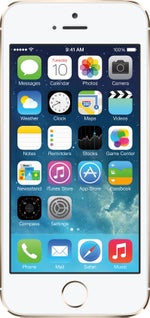










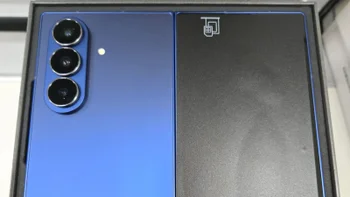
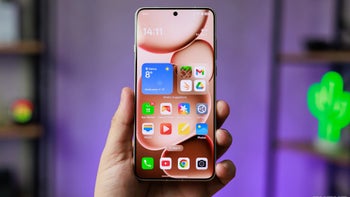
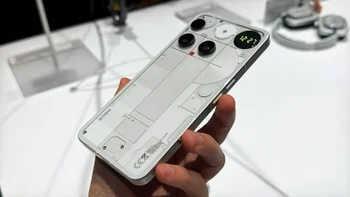
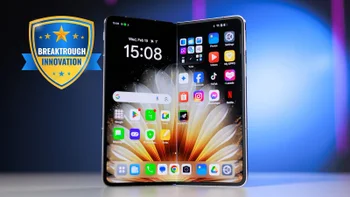
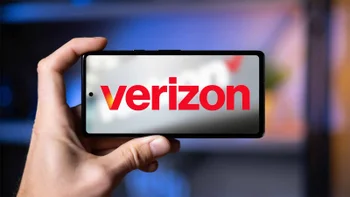


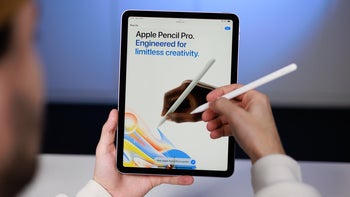
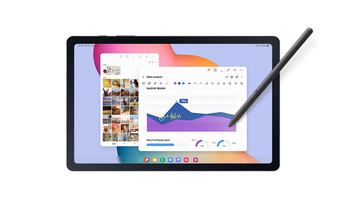
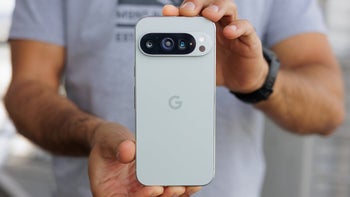
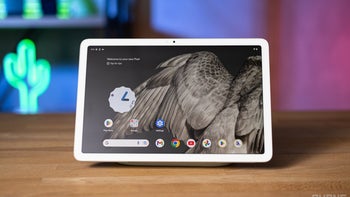






Things that are NOT allowed:
To help keep our community safe and free from spam, we apply temporary limits to newly created accounts: